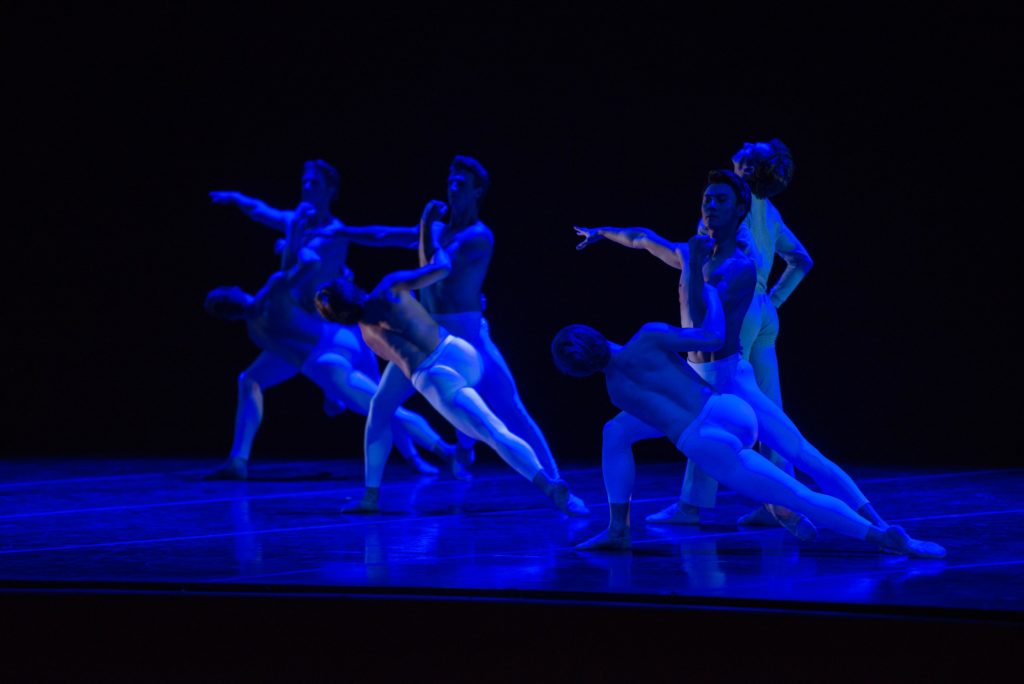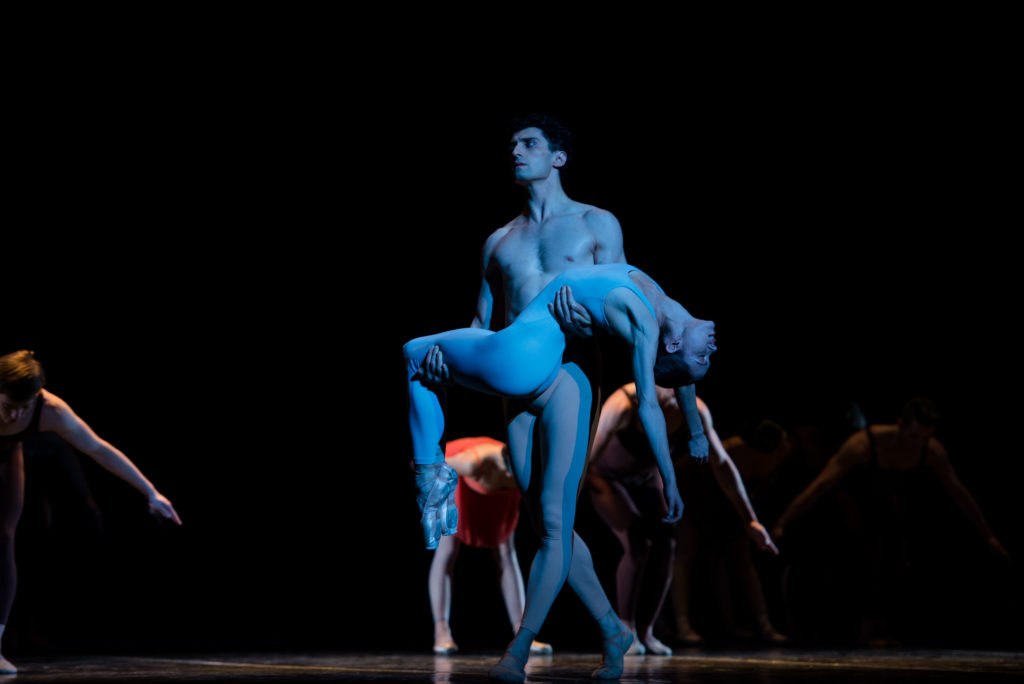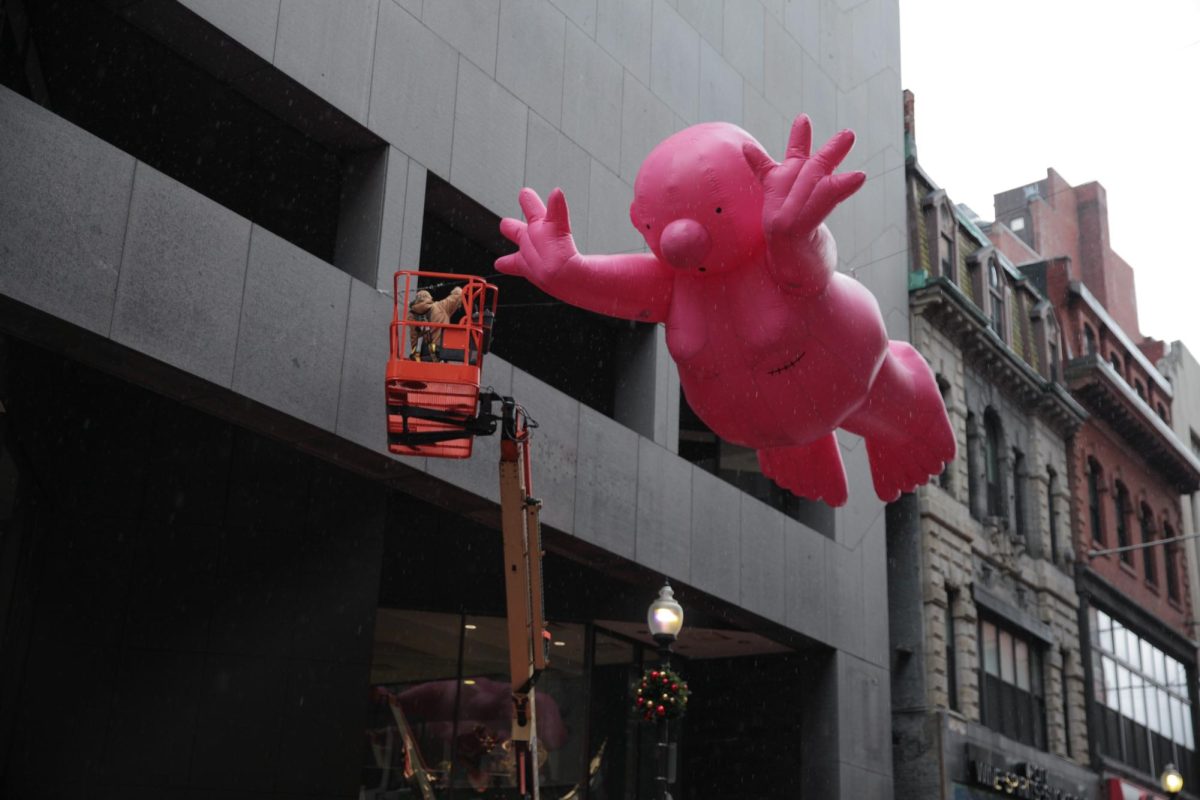By Cassidy DeStefano, news correspondent
Nearly 30 male ballet dancers bounded across the stage, punctuating otherwise elegant steps with a sudden crook of an arm or slap to the thigh.
This lively first movementof the“Third Symphony of Gustav Mahler,”, titled “Yesterday,” was the first of six in renowned choreographer John Neumeier’s ballet adaptation of the work. Performances run through Nov. 1 at the Boston Opera House.
“They’ve put in 200 extra hours of cross training on top of daily rehearsals and company class to perfect this,” Toni Bolger Geheb, Boston Ballet senior public relations manager, said. “It’s really tested their stamina.”
Austrian-born Mahler wrote the symphony sometime between 1893 and 1896. The exact date of completion is indefinite, but the collection was first performed in Krefeld, Germany in 1902.
“It started with the music,” orchestra Conductor Jonathan McPhee, who has worked with Neumeier before, said. “I mean, when John approached this piece, he really learned the piece of music inside and out, and I think that one of the most impressive things that he has done is internalized Mahler’s compositional methodology. There’s freedom within it for people to bring their own story to it.”
Neumeier’s poignant narrative, centered around the growth of one male protagonist, portrayed by dancer Lasha Khozashvili, continued to unfurl in the movements that followed. The second movement, titled “Summer,” was a jubilee of pastel palettes and drawn-out steps. “Autumn,” the third of six, proved to be more regal, emphasizing the richness underscoring all romantic relationships.
Brittany Summer, an NU student and a dancer in the company, said she was honored to share in Neumeier’s vision.
“It’s really an amazing privilege to be able to work with someone of his caliber,” Summer said. “He’s been… putting the finishing touches on the program.”
Summer, who appears in the second and sixth movements, said the second half of the performance abruptly digresses, delving deep into the protagonist’s inner conflict – his ties to boyhood sharply juxtaposed with his responsibility of carrying another through life. As the third movement melts into the fourth, titled “Night,” he cradles a lifeless female clad in white in his arms, convicting himself as the thief of her innocence.
At this point in the performance, operatic melodies fill the cavernous space, stretching through the movement until the eventual union of three performers, extending joined hands towards the audience to end the act.
“There are definite emotions that the singing will evoke and the choreography as well,” McPhee said. “Do they necessarily tell exactly the same story? No. Do they leave room for the listener to bring their own story? Yes.”
“Angel,” the fifth and briefest section, introduces a new character that ultimately bolsters the protagonist’s renewed belief in love. Dressed in a red velvet jumpsuit, dancer Misa Kuranaga takes the stage, her flexed-foot movements making her look like a graceful rag doll dancing in time to a chorus’ angelic acclimation.
The majestic sixth movement, “What Love Tells Me,” caps off the story. It starts with a maelstrom of lifts and leaps, culminating in the protagonist outstretching a hand toward the new feminine object of his affection. She slowly walks across the stage, as sure of her path as the protagonist is of his.
Ultimately, Summer interprets Neumeier’s work as a beautifully ambiguous journey through the emotional development of a young man.
“John just imparted the idea that yes, there’s choreography and yes, there are steps, but most importantly it’s about feeling of humanity and sharing some themes that are universal,” she said. “It’s about trying not to be anything artificial when taking on any character and just being human and allowing the movements to speak to your own humanity.”











